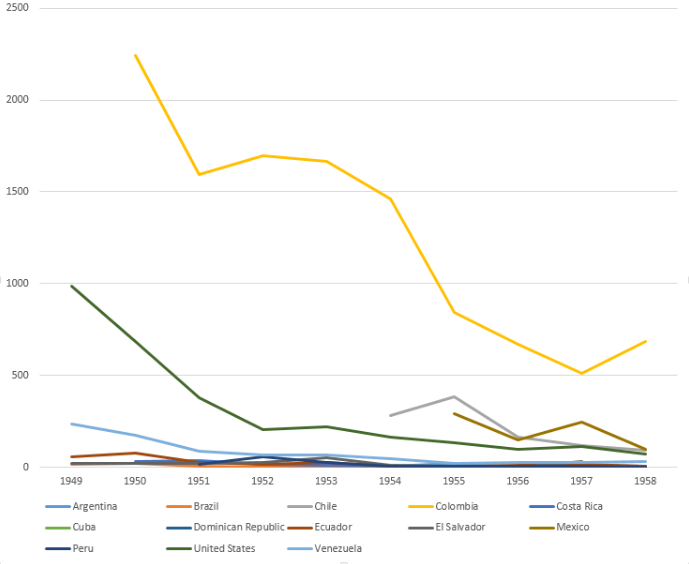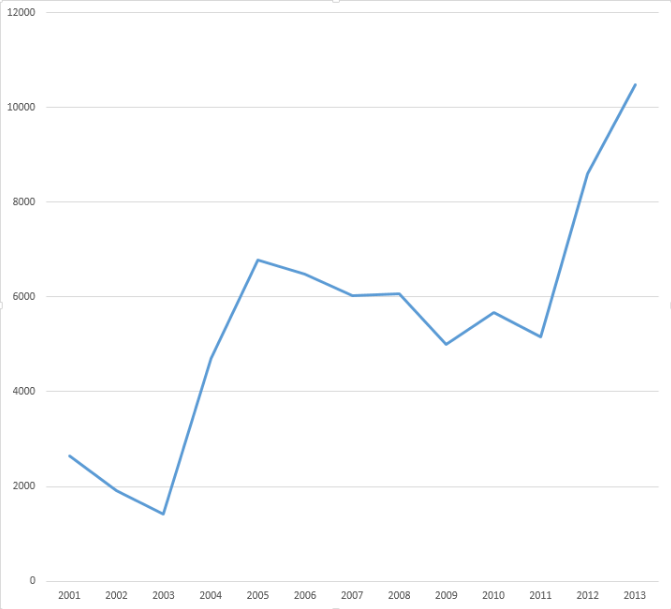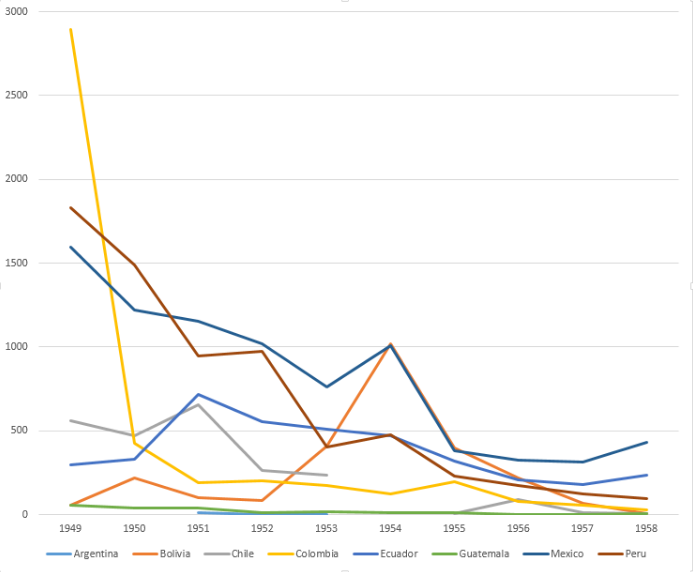You're using an outdated browser. Please upgrade to a modern browser for the best experience.

Submitted Successfully!
Thank you for your contribution! You can also upload a video entry or images related to this topic.
For video creation, please contact our Academic Video Service.
| Version | Summary | Created by | Modification | Content Size | Created at | Operation |
|---|---|---|---|---|---|---|
| 1 | Beatrix Zheng | -- | 1649 | 2022-11-09 01:36:22 | | | |
| 2 | Beatrix Zheng | Meta information modification | 1649 | 2022-11-09 16:30:10 | | |
Video Upload Options
We provide professional Academic Video Service to translate complex research into visually appealing presentations. Would you like to try it?
Cite
If you have any further questions, please contact Encyclopedia Editorial Office.
HandWiki. Timeline of Typhus. Encyclopedia. Available online: https://encyclopedia.pub/entry/33760 (accessed on 20 December 2025).
HandWiki. Timeline of Typhus. Encyclopedia. Available at: https://encyclopedia.pub/entry/33760. Accessed December 20, 2025.
HandWiki. "Timeline of Typhus" Encyclopedia, https://encyclopedia.pub/entry/33760 (accessed December 20, 2025).
HandWiki. (2022, November 09). Timeline of Typhus. In Encyclopedia. https://encyclopedia.pub/entry/33760
HandWiki. "Timeline of Typhus." Encyclopedia. Web. 09 November, 2022.
Copy Citation
This is a timeline of typhus, describing major events such as epidemics and key medical developments.
typhus
timeline
1. Full Timeline



| Year/period | Type of event | Event | Present day geographical location |
|---|---|---|---|
| 460 BC | Medical development | Greek physician Hippocrates defines typhus as "fever with a confused state of the intellect (...) a tendency to stupor".[4] | Greece |
| 430 BC | Epidemic | The Athenian Plague is the first pestilence that might be attributed to louse-borne typhus. Athenian historian Thucydides describes a typhus-like disease so devastating that contributed ultimately to the downfall of Athens.[5] | Greece |
| 313 BC | Medical development | Chinese clinical manual Zhouhofang describes first clinical accounts of scrub typhus (called "Tsutsugamushi disease").[4] | China |
| 1489 | Epidemic | One of the first written descriptions of typhus (probably epidemic) describes rash, sores, delirium, and about 17,000 deaths of Spanish troops, during the Granada War.[6][7] | Spain |
| 1546 | Medical development | Italian physician Girolamo Fracastoro publishes De contagione et contagiosis morbis where he differentiates typhus from plague.[4] | Italy |
| 1655 | Epidemic | Typhus is first recorded in Mexico (the country would suffer a total of 22 typhus epidemics between 1655 and 1918).[8] | Mexico |
| 1759 | Report | English authorities estimate about 25% of all prisoners in England dying of gaol fever (epidemic typhus) per year.[6] | United Kingdom |
| 1760 | Medical development | The disease is named typhus, from the Greek smoke or stupor because of the symptom of delirium that can develop.[6] In Montpellier, French physician François Boissier de Sauvages de Lacroix creates the clinical term typhus exanthematique for epidemic typhus.[4] | France , Europe |
| 1762 | Medical development | Scottish physician James Lind promotes hygienic measures during typhus outbreaks to reduce mortality.[4] | United Kingdom |
| 1810 | Medical development | Japanese physician Hakuju Hashimoto first describes a condition resembling typhus, setting the basis of the name "tsutsugamuchi disease", combining the terms tsutsuga (disease, harm, noxious), and muchi (insect/creature).[4][9] | Japan |
| 1812 | Epidemic | About as many as 300,000 French soldiers are estimated to perish from typhus, outnumbering the fewer than 100,000 losing their lives in battle, during the French invasion of Russia.[7] | Russia |
| 1829 | Medical development | French physician Pierre Charles Alexandre Louis differentiates typhus fever from typhoid fever.[5] | France |
| 1830–1839 | Epidemic | Typhus outbreaks kill over 100,000 people.[6] | Ireland |
| 1837 | Scientific development | American physician William Wood Gerhard shows that typhus and typhoid, though they often share symptoms, are separate and distinct contagions. Gerhard distinguishes enteric fevers (i.e. typhoid) from ricketsial fevers (i.e. typhus).[4][10] | United States |
| 1837–1873 | Epidemic | Typhus outbreaks are recorded in Philadelphia, Concord, Baltimore, and Washington, D.C..[6] | United States |
| 1843 | Scientific development | Craigie and Hendersen differentiate relapsing fevers clinically and pathologically from epidemic typhus.[4] | |
| 1847 | Epidemic | The 1847 North American typhus epidemic is caused by a massive Irish emigration, during the Great Famine. More than 20,000 people die.[11] | Canada |
| 1858 | Medical development | British physicist Charles Murchison associates typhus epidemics with poor hygienic standards.[4] | |
| 1878 | Medical development | Theobald Palm publishes in Europe first account of Japanese Tsutsugamuchi disease (scrub typhus).[4] | |
| 1898 | Medical development | During an outbreak of atypical typhus, Brill describes the case of 17 patients with an illness resembling typhoid fever. This condition becomes known as Brill's disease. By 1950, researchers would show by clinical and serological data that the cause of Brill's disease was rickettsia prowazekii, the same agent responsible for epidemic typhus.[4][12][12] | United States |
| 1906 | Scientific development | Howard Ricketts and Russel Wilder discover the causative agent and transmission vector (dermacentor variabilis) of Rocky Mountain spotted fever (also known as tick typhus).[4] | |
| 1908 | Scientific development | Schüffner describes 'pseudo-typhoid' in Sumatra, which later would reveal to be tsutsugamuchi disease (scrub typhus).[4] | Indonesia |
| 1909 | Scientific development | French bacteriologist Charles Nicolle, working at Pasteur Institute, correctly hypothesizes that lice are the vectors for transmitting typhus from person to person. Although Nicolle does not succeed in developing a vaccine against the disease, his discovery helpes greatly on the Western Front during the First World War, when delousing stations are established. Nicolle is awarded the Nobel Prize in Physiology or Medicine in 1928.[7] | Tunis |
| 1910 | Scientific development | Smithson describes a disease resembling typhus in Australia.[4][13] | Australia |
| 1910 | Scientific development | American pathologist Howard Taylor Ricketts along with Russel M. Wilder, first discovers rickettsiae (named after him) in the blood of epidemic typhus patients in Mexico.[4] | Mexico |
| 1910 | Scientific development | Conor and Bruch describe boutonneuse fever (also called Indian tick typhus or Mediterranean spotted fever) in Tunis.[4] | Tunisia |
| 1911 | Scientific development | McNaught describes an anomalous form of 'para-typhoid' in South Africa, with suspected tick transmission. The condition, consisting of fever and profuse rash, would later reveal to be two forms: Mediterranean spotted fever and African tick bite typhus.[4] | South Africa |
| 1913 | Scientific development | McKenchie describes a typhus-like fever in the Himalaya n foothills.[4][14] | India |
| 1916 | Scientific development | Brazilian pathologist Henrique da Rocha Lima, discovers the cause of epidemic typhus, describing pathogen rickettsia prowazekii in honor of Howard Taylor Ricketts and Stanislaus von Prowazek, both of whom contracted typhus in the course of their investigations and died.[5][6] | Germany |
| 1916 | Scientific development | Austrian–Bohemian bacteriologist Edmund Weil and Polish microbiologist Arthur Felix first describe the later so–called Weil–Felix test, an agglutination test for the diagnosis of rickettsial infections. Weil and Felix establish that typhus fever develops agglutinins for certain strains of proteus, namely proteus OX19 and X2.[5][15] | |
| 1917 | Scientific development | Neill uses blood from cases of typhus fever in Texas and injects it in the peritoneum of male guinea pigs, leading to scrotal swelling and inflammation, along with hemorrhage. This would later be known as Neill-Mooser's reaction, due to the extension of the experiment my Mooser in 1928.[16] | |
| 1922 | Scientific development | Hone describes a new form of endemic typhus (OX19 positive) in Australia. The responsible pathogen would later reveal to be rickettsia honei.[4][17][18] | Australia |
| 1922 | Epidemic | Typhus epidemic reaches its peak in Soviet territory, with some 25 to 30 million cases in Russia.[19] | Russia |
| 1923 | Medical development (prevention) | Cyanide-based pesticide Zyklon B is developed. The product would become notorious for its use by Nazi Germany to conduct mass killings of Jews and other prisoners during the Final Solution.[20] | Germany |
| 1923 | Scientific development | American epidemiologist Kenneth F. Maxcy describes murine typhus as an endemic form of sporadic typhus in the United States. Maxcy suggests that murine typhus might occur in the absence of lice and is not necessarily imported from outside the country.[21] | United States |
| 1924 | Scientific development | Fletcher distinguishes scrub typhus from murine typhus.[4] | |
| 1926 | Scientific development | American epidemiologist Kenneth F. Maxcy, after studying typhus in the Southern United States, suggests that fleas (xenopsylla cheopis) might be the vectors of typhus into humans. Maxcy's theory would be validated by two different groups in 1931.[16] | |
| 1926 | Scientific development | Fletcher and Lesslar create the term "tropical typhus".[4][17] | |
| 1930 | Scientific development | Scrub typhus, a form of typhus caused by the intracellular parasite Orientia tsutsugamushi, is first isolated and identified.[22] | Japan |
| 1930 | Scientific development | Nagayo demonstrates ricketsia tsutsugamuchi for the first time inside cells.[4] | |
| 1931 | Scientific development | Dyer proves typhus is transmitted by rat fleas (xenopsylla cheopis).[4] | |
| 1933 | Medical development | Polish biologist Rudolf Weigl develops the first human immunization against typhus. Weigl would first grow healthy lice for about twelve days by having uninfected lice feed on humans once a day for about 30 to 45 minutes, keeping the lice in small cages and strapping them to the thighs or calves of the human “feeders” allowing the lice to grow. Then he would inject the lice with rickettsia prowazekii, further allowing the lice to grow for an additional five days on human “feeders” who had been given the vaccine. Finally he would extract and grind up the lice’s midguts into a paste, which would become the vaccine. Weigl's method becomes so successful that the few human testers who developed typhus, including Weigl himself, all quickly would recover from the disease.[7] | Poland |
| 1934 | Medical development | American microbiologist Hans Zinsser suggests that so called Brill's disease represents a recrudescence of epidemic typhus originally acquired in Europe (the condition would be renamed Brill–Zinsser disease).[12] The same year, Zinsser develops a vaccine (made of killed rickettsiae) for immunization against Typhus.[23] | United States |
| 1938 | Scientific development | American bacteriologist H. R. Cox demonstrates that bacterium rickettsia prowazekii could be cultivated most satisfactorily in the yolk sacs of chick embryos.[5][24] | |
| 1943 | Scientific development | American major Harry Plotz and others describe a method that would permit differentiation between epidemic typhus and murine typhus.[5] | United States |
| 1945 | German diarist Anne Frank dies of typhus.[25] | Germany | |
| 1945 | "Operation Tyburn" is launched. The first mass production of scrub typhus vaccine starts.[4] | ||
| 1959–1975 | Vietnam War. Scrub typhus is one of the major causes of fevers of unknown origin.[4] | Vietnam | |
| 1960 | Scientific development | German researcher F. Weyer shows that the typhus responsible rickettsial pathogen multiplies in the gut of the crab louse.[5][26][27] | Germany |
| 1978 | Epidemic | Murine typhus breaks out in Kuwait. 254 cases are reported by the World Health Organization.[23] | Kuwait |
| 1996 | Epidemic | Murine typhus breaks out in Portugal.[23] | Portugal |
| 1997 | Epidemic | The most important outbreak of epidemic typhus occurs in Burundi and involves more than 40,000 patients.[28] | Burundi |
| 2000 | Epidemic | Scrub typhus reemerges in Maldives and Palau.[4] | Maldives, Palau |
| 2001 | Epidemic | Murine typhus breaks out in Nepal. 50% of 756 disease cases are found to have antibodies against rickettsia typhi.[23] | Nepal |
| 2001–2013 | Epidemic | A rapid increase in the incidence of patients with scrub typhus is observed in South Korea, with the majority of cases reported in the western and southern coast. An almost four-fold increase in the number of patients is observed in 2013 (10,485 cases) compared to 2001 (2,637 cases).[3] | South Korea |
| 2013 | Epidemic | Twelve patients with murine typhus are identified in Galveston, Texas. An isolate from 1 patient confirms to be Rickettsia typhi. This reemergence would emphasize the importance of vector control and awareness of this disease by local physicians and public health officials.[29] | United States |
References
- "REPORTED CASES OF NOTIFIABLE DISEASES IN THE AMERICAS 1949 - 1958". http://iris.paho.org/xmlui/bitstream/handle/123456789/1330/41680.pdf?sequence=2. Retrieved 24 February 2017.
- "Typhus". https://www.britannica.com/science/typhus. Retrieved 3 February 2017.
- Lee, Hyeong-Woo; Cho, Pyo Yun; Moon, Sung-Ung; Na, Byoung-Kuk; Kang, Yoon-Joong; Sohn, Youngjoo; Youn, Seung-Ki; Hong, Yeongseon et al. (2015). "Current situation of scrub typhus in South Korea from 2001–2013". Parasites & Vectors 8: 238. doi:10.1186/s13071-015-0858-6. PMID 25928653. http://www.pubmedcentral.nih.gov/articlerender.fcgi?tool=pmcentrez&artid=4416255
- Farrar, Jeremy; Hotez, Peter; Junghanss, Thomas; Kang, Gagandeep; Lalloo, David; White, Nicholas J. (2013-10-26). Manson's Tropical Diseases. ISBN 9780702053061. Retrieved 12 February 2017.
- CONLON, JOSEPH M.. "THE HISTORICAL IMPACT OF EPIDEMIC TYPHUS". http://www.montana.edu/historybug/documents/TYPHUS-Conlon.pdf. Retrieved 3 February 2017.
- "What is the history of typhus? 3". http://www.medicinenet.com/typhus/page3.htm. Retrieved 3 February 2017.
- "Typhus, War, and Vaccines". 16 March 2016. http://www.historyofvaccines.org/content/blog/typhus-war-and-vaccines. Retrieved 3 February 2017.
- Burns, Jordan N.; Acuna-Soto, Rodolfo; Stahle, David W. (2014). "Drought and Epidemic Typhus, Central Mexico, 1655–1918". Emerging Infectious Diseases 20 (3): 442–447. doi:10.3201/eid2003.131366. PMID 24564928. http://www.pubmedcentral.nih.gov/articlerender.fcgi?tool=pmcentrez&artid=3944858
- Viswanathan, Stalin; Muthu, Vivekanandan; Iqbal, Nayyar; Remalayam, Bhavith; George, Tarun (2013). "Scrub Typhus Meningitis in South India — A Retrospective Study". PLOS One 8 (6): e66595. doi:10.1371/journal.pone.0066595. PMID 23799119. Bibcode: 2013PLoSO...866595V. http://www.pubmedcentral.nih.gov/articlerender.fcgi?tool=pmcentrez&artid=3682970
- "William Wood Gerhard (1809-1872)". http://archives.dickinson.edu/people/william-wood-gerhard-1809-1872. Retrieved 13 February 2017.
- "The government inspector's office". http://collections.musee-mccord.qc.ca/en/collection/artifacts/M993X.5.1529.1. Retrieved 4 February 2017.
- REILLY, PHILIP J.; KALINSKE, ROBERT W. (1980). "Brill-Zinsser Disease in North America". Western Journal of Medicine 133 (4): 338–340. PMID 7347050. http://www.pubmedcentral.nih.gov/articlerender.fcgi?tool=pmcentrez&artid=1272328
- FLETCHER, W; LESSLAR, J. E.. "Tropical Typhus and Brill's Disease". https://www.cabdirect.org/cabdirect/abstract/19272701000. Retrieved 14 February 2017.
- MEGAW, J. W. D. (1921). "A Typhus-like Fever in India, possibly transmitted by Ticks". Indian Medical Gazette 56 (10): 361–371. PMID 29007245. PMC 5166359. https://www.cabdirect.org/cabdirect/abstract/19222900105. Retrieved 15 February 2017.
- Kendall, Arthur Isaac; Cheetham, Harold C.; Hamilton, Cliff S. (1922). "The Nitrogenous Metabolism of Bacillus Proteus: Studies in Bacterial Metabolism. LXV". The Journal of Infectious Diseases 30 (2): 251–258. doi:10.1093/infdis/30.2.251. https://zenodo.org/record/2331770.
- Raoult, Didier; Parola, Philippe, eds (2007-04-26). Rickettsial Diseases. doi:10.3109/9781420019971-5. ISBN 978-0-8493-7611-5. http://www.crcnetbase.com/doi/abs/10.3109/9781420019971-5.
- FELIX, A.; RHODES, M.. "SEROLOGTICAL VARIETIES OF TYPHUS FEVER". Bacteriological Department, Lister Institute, London.. http://europepmc.org/backend/ptpmcrender.fcgi?accid=PMC2170603&blobtype=pdf. Retrieved 15 February 2017.
- "TYPHUS FEVER". https://www.awm.gov.au/images/collection/pdf/RCDIG1070385--1-.pdf. Retrieved 15 February 2017.
- Baker, Kevin (2014-11-03). The Worst World Disasters of All Time. ISBN 9781456623432. https://books.google.com/?id=la4kBQAAQBAJ&pg=PT145&lpg=PT145&dq=%221922%22++%22Typhus%22++++%2225%22+to+%2230%22+million+cases+in+%22Russia%22.#v=onepage&q=%221922%22%20%20%22Typhus%22%20%20%20%20%2225%22%20to%20%2230%22%20million%20cases%20in%20%22Russia%22.&f=false. Retrieved 7 February 2017.
- "Holocaust Encyclopedia: Gassing Operations". https://www.ushmm.org/wlc/en/article.php?ModuleId=10005220. Retrieved 2 Mar 2018.
- Hughes, John H. (1961). "Entomological Contributions to Human Welfare: Through the Public Health Service". Bulletin of the Entomological Society of America 7 (2): 71–75. doi:10.1093/besa/7.2.71. https://dx.doi.org/10.1093%2Fbesa%2F7.2.71
- "Scientists find deadly scrub typhus bacteria in South America". Reuters. 2016-09-07. https://www.reuters.com/article/us-health-typhus-idUSKCN11D2OK. Retrieved 12 February 2017.
- Munawar, Sultana. "Endemic Typhus". http://www.austincc.edu/microbio/2421a/rt.htm. Retrieved 11 February 2017.
- "Biology of Rickettsial Diseases". Defense Technical Information Center. http://www.dtic.mil/dtic/tr/fulltext/u2/a199791.pdf. Retrieved 4 February 2017.
- "The end". http://www.annefrankguide.net/en-us/bronnenbank.asp?tid=15925. Retrieved 7 February 2017.
- Weyer, F. (1952). "The behavior of Rickettsia akari in the body louse after artificial infection". American Journal of Tropical Medicine and Hygiene 1 (5): 809–20. doi:10.4269/ajtmh.1952.1.809. PMID 14952705. http://phthiraptera.info/Publications/46375.pdf. Retrieved 4 February 2017.
- Maramorosch, Karl; McIntosh, Arthur H. (1994-06-03). Arthropod Cell Culture Systems. ISBN 9780849376429. https://books.google.com/?id=ACTMENR2U90C&pg=PA67&lpg=PA67&dq=F+Weyer+louse+rickettsia#v=onepage&q=F%20Weyer%20louse%20rickettsia&f=false. Retrieved 4 February 2017.
- Mokrani, K.; Fournier, P. E.; Dalichaouche, M.; Tebbal, S.; Aouati, A.; Raoult, D. (2004). "Reemerging Threat of Epidemic Typhus in Algeria". Journal of Clinical Microbiology 42 (8): 3898–3900. doi:10.1128/JCM.42.8.3898-3900.2004. PMID 15297561. http://www.pubmedcentral.nih.gov/articlerender.fcgi?tool=pmcentrez&artid=497610
- Blanton, Lucas S.; Vohra, Rahat F.; Bouyer, Donald H.; Walker, David H. (2015). "Reemergence of Murine Typhus in Galveston, Texas, USA, 2013". Emerging Infectious Diseases 21 (3): 484–486. doi:10.3201/eid2103.140716. PMID 25695758. http://www.pubmedcentral.nih.gov/articlerender.fcgi?tool=pmcentrez&artid=4344263
More
Information
Subjects:
Others
Contributor
MDPI registered users' name will be linked to their SciProfiles pages. To register with us, please refer to https://encyclopedia.pub/register
:
View Times:
1.8K
Entry Collection:
HandWiki
Revisions:
2 times
(View History)
Update Date:
09 Nov 2022
Notice
You are not a member of the advisory board for this topic. If you want to update advisory board member profile, please contact office@encyclopedia.pub.
OK
Confirm
Only members of the Encyclopedia advisory board for this topic are allowed to note entries. Would you like to become an advisory board member of the Encyclopedia?
Yes
No
${ textCharacter }/${ maxCharacter }
Submit
Cancel
Back
Comments
${ item }
|
More
No more~
There is no comment~
${ textCharacter }/${ maxCharacter }
Submit
Cancel
${ selectedItem.replyTextCharacter }/${ selectedItem.replyMaxCharacter }
Submit
Cancel
Confirm
Are you sure to Delete?
Yes
No





